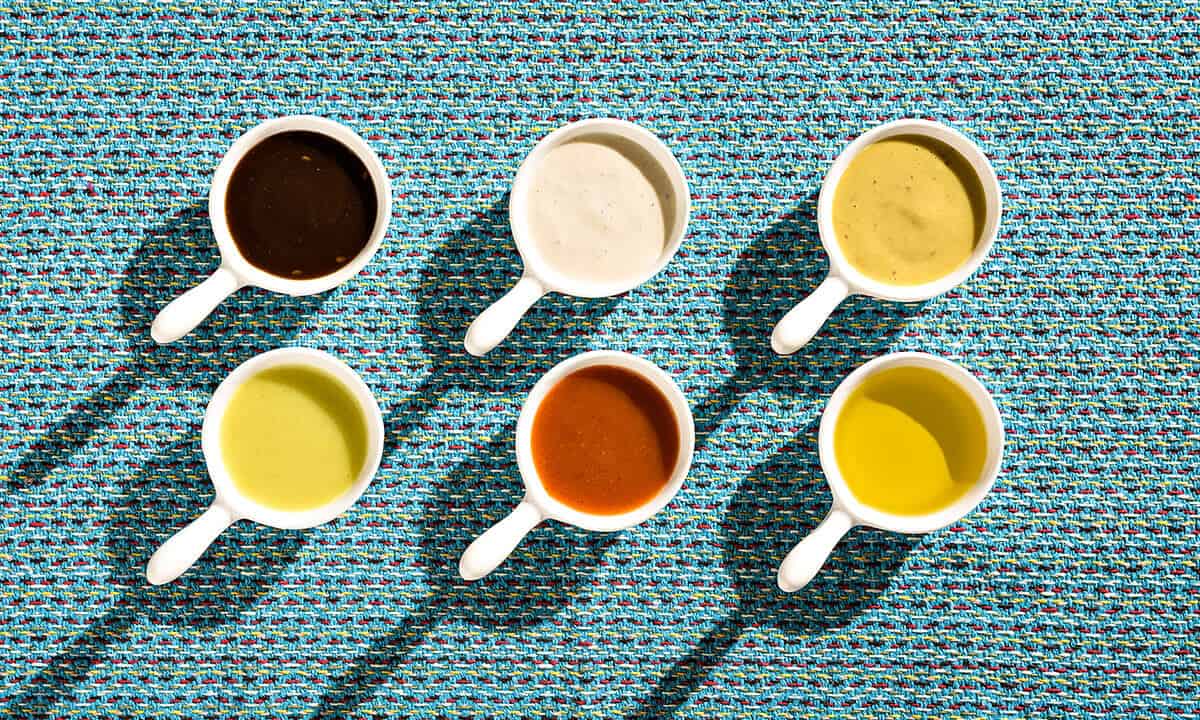
In the Philippines, a dish is never really finished in the kitchen but at the dining table where a variety of condiments await for final seasoning.
The condiment culture is hardly exclusive to the country. Ketchup on a hotdog is as pervasive as sarsa on lechon. There is bearnaise on steak, sambal on ayam goreng, gravy on turkey. In fact, condiments, like garum and liquamen, can be traced as far back as the time of ancient Greece and Rome. Apicius, a cookbook that gathers recipes from the Roman empire in the 4th and 5th centuries, had an entire section dedicated to such flavor enhancers—”De Condimentis.”
If you paid attention to your freshman English class, you might remember Carmen Guerrero Nakpil’s essay Where is the Patis? where she discusses the categorical comforts of Filipino cuisine. No matter how far Filipinos have come and however well they adjust to their new surroundings, the stomach will never be quite as adaptable. There will always be a hankering for white rice, a yearning for the tang of sinigang, and yes, a pining for that final splash of patis.
“No matter how strange or different the food, the patis gives it Filipino flavor, so that the diner’s culture-bound taste buds can relate to it,” writes the late famed food writer Doreen Fernandez in her 1988 essay Culture Ingested: On the Indigenization of Philippine Food. She even relayed stories of couples bringing a stock of patis on their honeymoon, just for that memory of home.
But the Filipino’s sawsawan index is not limited to patis. It is an expansive range, with an endless number of permutations, that covers a variety of palates.
Perhaps it would not be overreaching to say that in the Philippines, the sawsawan is more than a superfluous step before consumption. It is the natural order of dining, the final stage of the culinary process. “In the Philippine experience, the diner cooperates and participates, and the creation is communal. The sawsawan thus transforms not only the taste, but also the relationship behind the experience,” Fernandez observed.
More than the kind of dish itself, it is the sawsawan that gives food that Filipino flair: the sarsa makes a roast pig a lechon, the toyomansi turns grilled pork into liempo, the suka makes dried fish danggit. And while there are some popular combinations, there is no sawsawan specific to one dish. It is more apt, even, to say that the sawsawan is specific to each person.
There is no complicated reason behind the sawsawan than what we already know. In the article “The Psychology of Condiments: A Review,” published in the International Journal of Gastronomy and Food Science, food scholar Charles Pence concluded: “The existence of condiments is probably also an acknowledgement of the very different worlds of taste in which we all live.”
The sawsawan speaks of the character of Filipino cuisine; the way we can’t agree on the best kind of adobo because there simply is no one best version of the dish. In the grand tradition of the sawsawan, the best version is the one in front of you, with your own fancied mixture perfecting a dish to become your ideal. More sour, more salt, more umami? It is nothing that soy sauce, vinegar, buro, or palapa cannot fix. In the Philippines, the cook leaves it up to the eater to know what tastes best.
This unspoken collaboration between cook and diner portrays the culture’s well-known virtue of friendship. Yes, the sawsawan celebrates our differences as individuals, but even as we express our own personal taste through sinamak or pinakurat, there is still that unshakeable feeling of camaraderie.


Recent Comments